Did you know you can link DNA matches to your family tree on Ancestry? In this post, learn how and why you should being using this new feature.
Plus, get useful hints for using this tool.
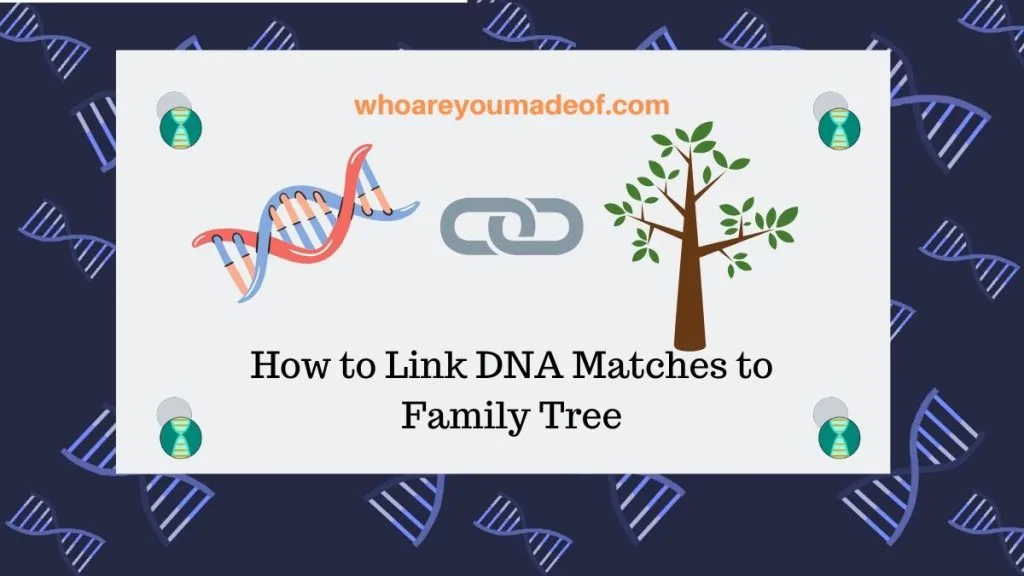
If you are like most people who use Ancestry DNA, you have many thousands of DNA matches. It can be challenging to keep them organized and understand how you are related to each match.
I'm very happy to be able to use this new feature, as it does make it easier to keep track of things.
How to link DNA match to your family tree
In order to link a DNA match to a family tree, you must already know where they belong in the tree. In addition, you must add them to your tree.
If you need help figuring out how your DNA match is related to you, definitely consider reading this post:
Adding them and their ancestors to your family tree is a task that is completed from your family tree. Linking them to your tree is done from within your DNA results.
Follow the steps below to successfully add your DNA match to their spot in your family tree:
First, login to your Ancestry account and navigate to your DNA Match page. The link below will take you right to your DNA match list, though you may need to login to your account:
Once you are viewing your DNA match list, scroll or search for the DNA match that you would like to link to your tree. After you have located the DNA match, click on their name in order to view their DNA match profile.
For example, I would like to link "S.B." from my DNA match list to my family tree. First, I will click on her name from my DNA match list:

Once you are on the DNA match's profile, you will see a circular pedigree icon next to their name at the top of the screen, as seen in the image below:
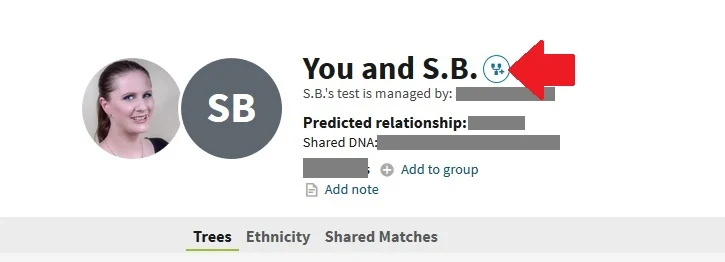
After you click on the button, a window will expand to your right. There is a search bar where you can enter the name of your DNA match.
If you have entered them in your tree, they will show up after you enter their name. Select the name in the selections that appear.
If you have successfully linked your DNA match to your tree, a little green check mark will show up next to the pedigree icon next to your DNA match's name on the match profile:
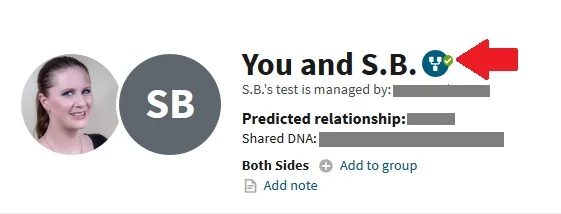
How to unlink DNA match from family tree on Ancestry
If you would like to unlink a DNA match from your tree that you previously linked, simply access the DNA match profile by choosing their name from your DNA match list.
Then, click the circular pedigree button next to their name. When the window expands to your right,
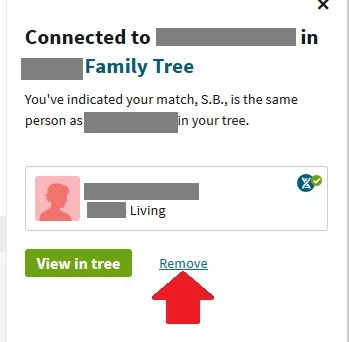
Why link DNA match to family tree
There are some good research benefits that can result from connecting your DNA matches to your family tree. I love tools that help me make my research more diligent and organized, and this is certainly one of them.
Below, I list a few benefits that I have found by using this tool.
Can help ensure you add DNA matches (and their ancestors) to your family tree
In order to be able to link a DNA match to your family tree, you will need to make sure that you have added them and their "upline" (i.e. ancestors you are not descended from) to your family tree.
This is a great way to make sure you are adding family members to your tree. I love building my tree "wide", as there are many benefits.
Can keep your DNA match list organized
Have you ever spent time researching a DNA match and then realized that you had already figured out how they were connected to your before, but just forgot?
My DNA Match Organizer Journal (ok, shameless plug!) helps with this problem, too, but there is no substitute for connecting them to your family tree directly from your DNA match list.
Can help you figure out your connection to other DNA matches
Once you know how a DNA match is related to you, it makes it easier to figure out how others are connected. This is especially true if you are adding your DNA match's "upline" to your tree, as there are surnames among your cousins you might not recognize otherwise.
Which trees can you link your DNA matches to?
You can link DNA matches to the main tree that is connected to your DNA results, or the DNA results of the person whose test results you administer.
Since you can only have one tree linked to your DNA results at once, if you would like to add them to a different tree, you will have to select a different tree in the DNA test settings.
Who can link DNA matches on test results?
Owners, collaborators, and editors of DNA results have the necessary permissions to link DNA matches to a family tree.
If you administer someone's test results and you can't link a DNA match to a tree, it might be because you don't have the correct permissions assigned to your role on their DNA test settings.
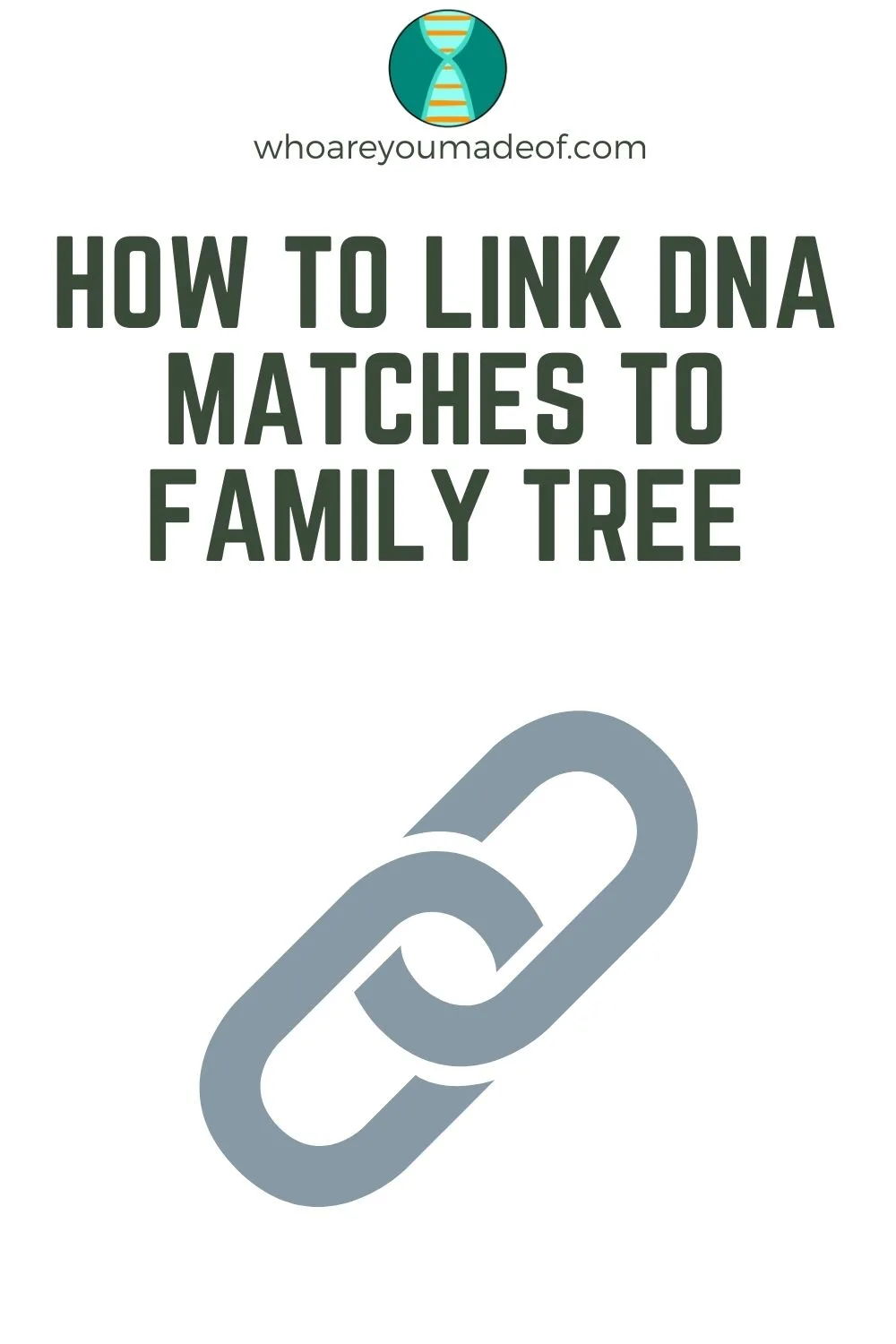
Conclusion
I hope that this post has helped you understand exactly how to link your DNA to your family tree, and why you should consider doing so.
If you have any questions about something that I mentioned in this post, or if you have your own ideas about how to use this tool to further your family tree research, please join us in the discussion below.
Thanks for stopping by!
